The 1960s and 1970s were known for the appearance of many models with two-stroke engines. Among them, the Suzuki Wolf 90 and 125 with front-leaning twin engines attracted the attention of fans of the two-stroke moped class 2 (gen 2) as unique models. However, these models were also known for their frequent breakdowns. We report on the results of our efforts to improve these weak points by following the example of other moped makers’ models.
- Customized Suzuki Wolf 125 with a unique design
- Unique engine oil supply system
- Wolf 125 with oil passage in the cylinder wall
- Newly fabricated oil passage with copper pipe and press-fit fixation
- Modifications to the carburetor to facilitate carburetor setting
- POINT
Customized Suzuki Wolf 125 with a unique design
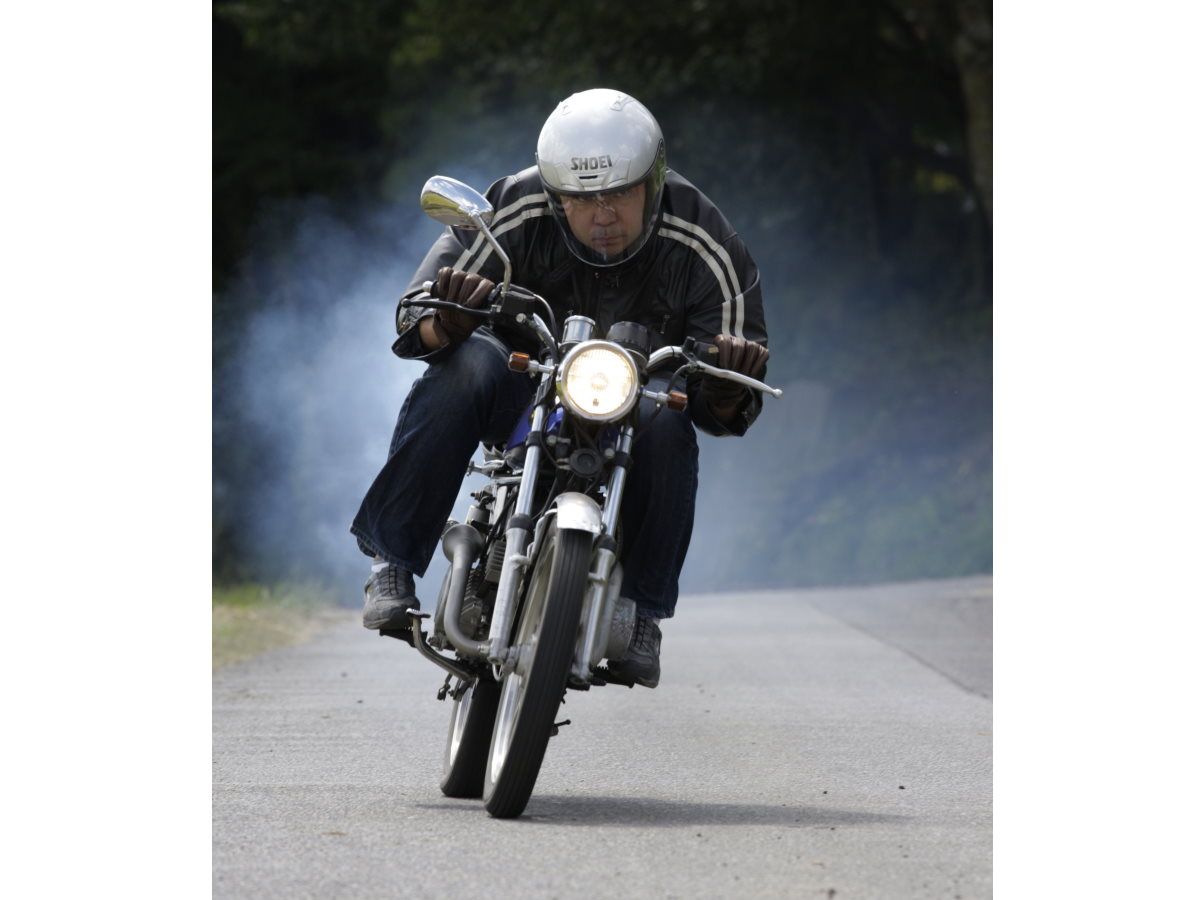

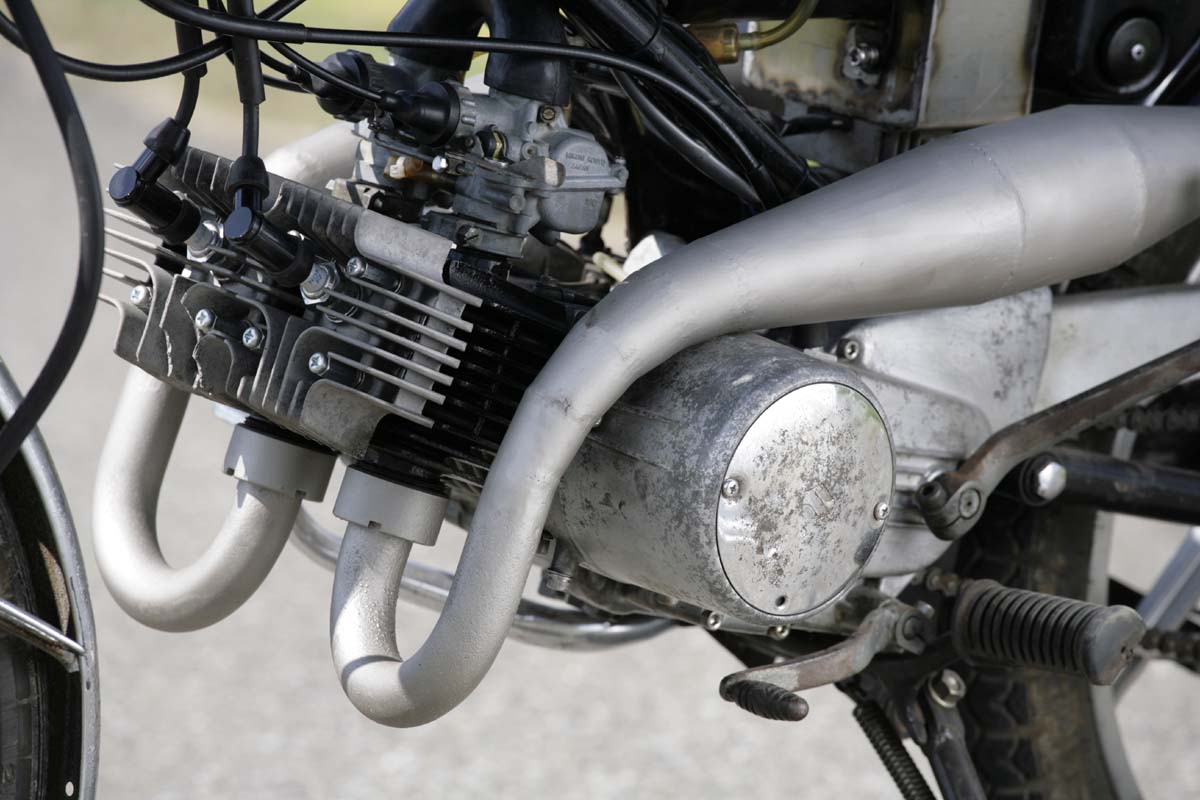

The Wolf 125 with a homemade expansion chamber had a different engine feel than the stock Wolf 125 or any of Yamaha’s little twin series (AT90/HS-1/HS90, AS2/AS3RD125, etc.) The engine performance easily swept the full speedometer scale. The engine performance was so good that it could easily run over the speedometer’s full scale. Based on the Wolf 125, the suspension was converted to the GT/GP series, also a Suzuki 2-stroke Hara2 model. The Wolf Custom’s appearance was enhanced by the incorporation of a GS125 star cast. The owner gave us the opportunity to test-ride the vehicle with his permission while it was being built.
Unique engine oil supply system
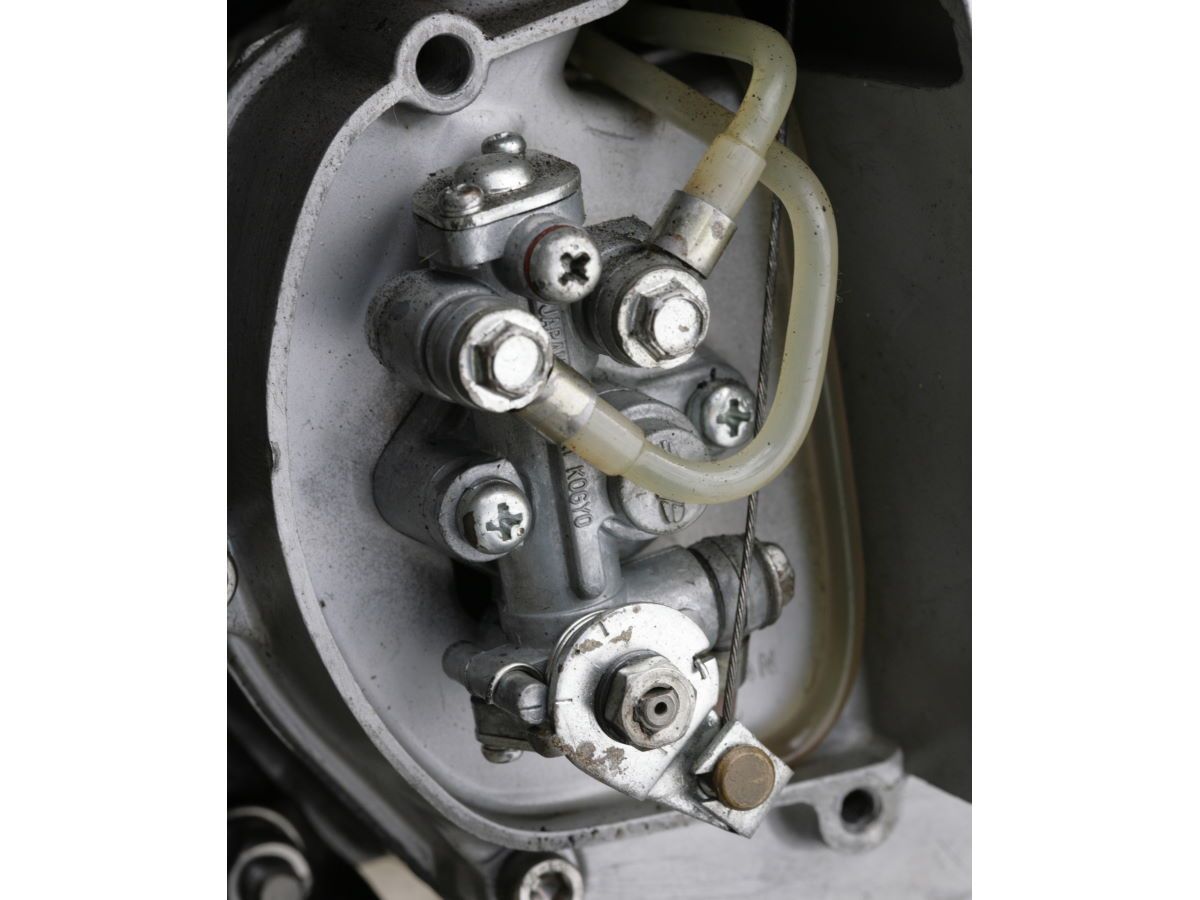

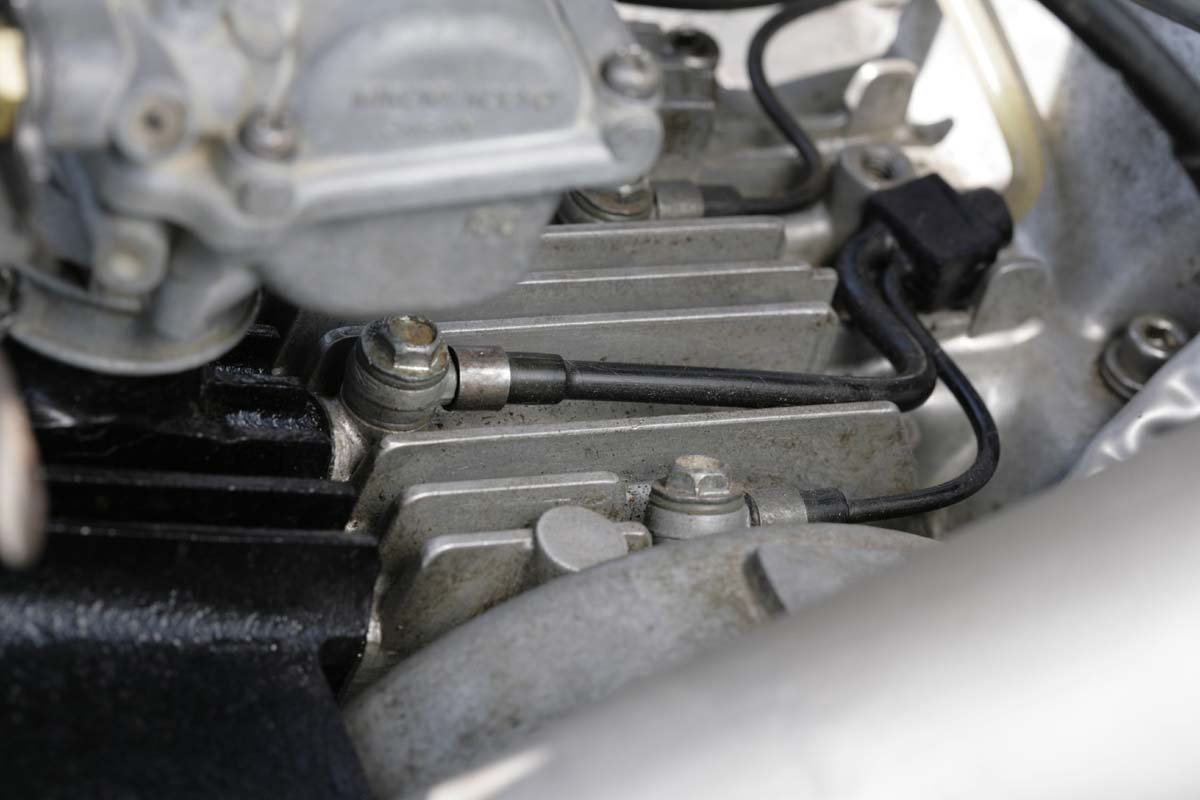

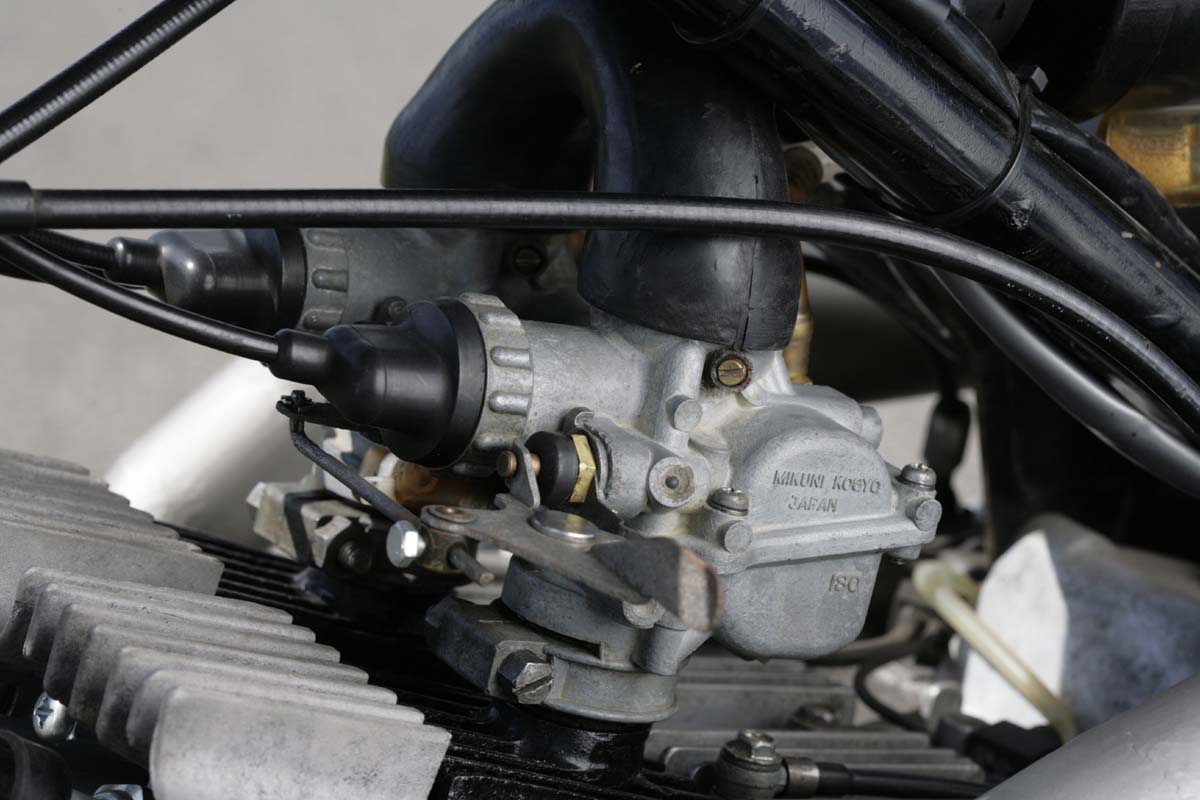

The engine layout, which looks as if it were a pair of forward-leaning single cylinders of the Suzuki AS50, is also reminiscent of Italian motorcycles of yesteryear. In terms of total design, the Wolf series is truly European in design, especially the Wolf series, which was clearly designed with Italian design in mind. This series is a model known for its seizure-prone engine, but the CCI oil pump has a system that automatically lubricates the crank bearings as well.
However, for some reason, there were many cylinder seizure problems. Generally, most of the forward-leaning engines of the time had either rotary disc valves or crankcase reed valves, so it was very unique to have piston valves and a downdraft carburetor.
Wolf 125 with oil passage in the cylinder wall
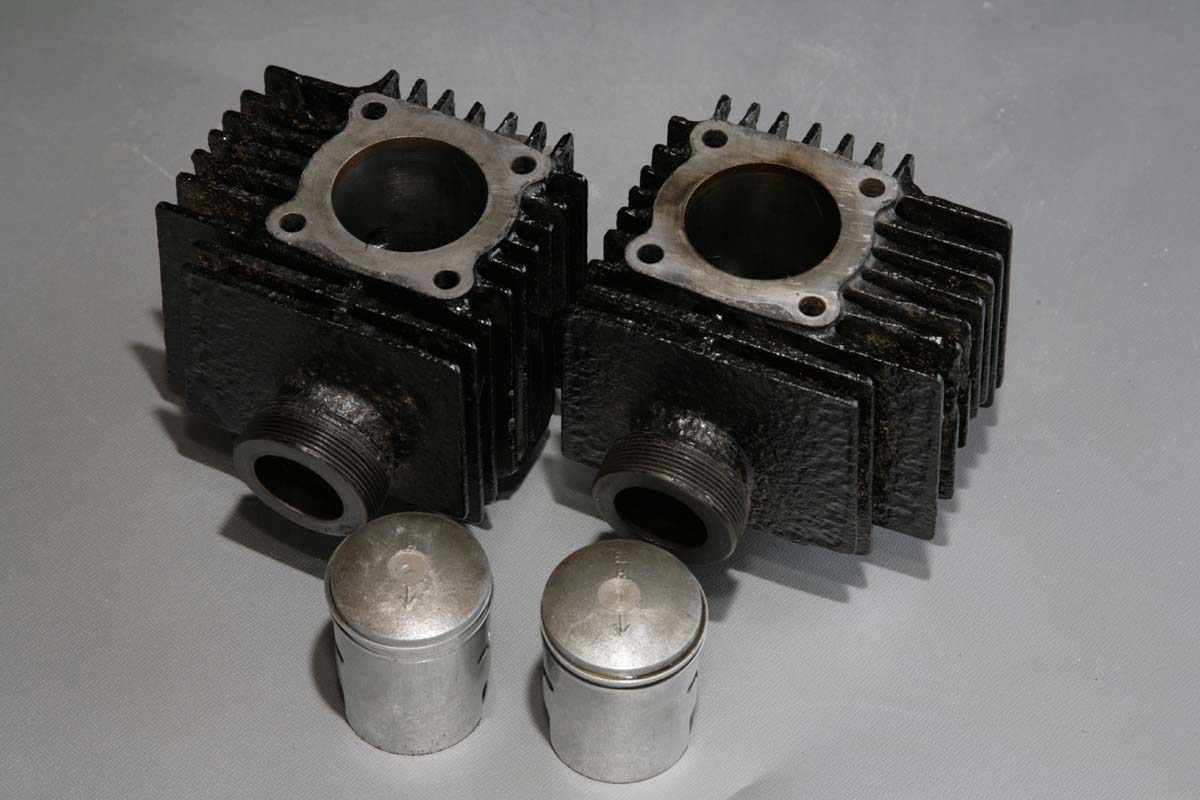

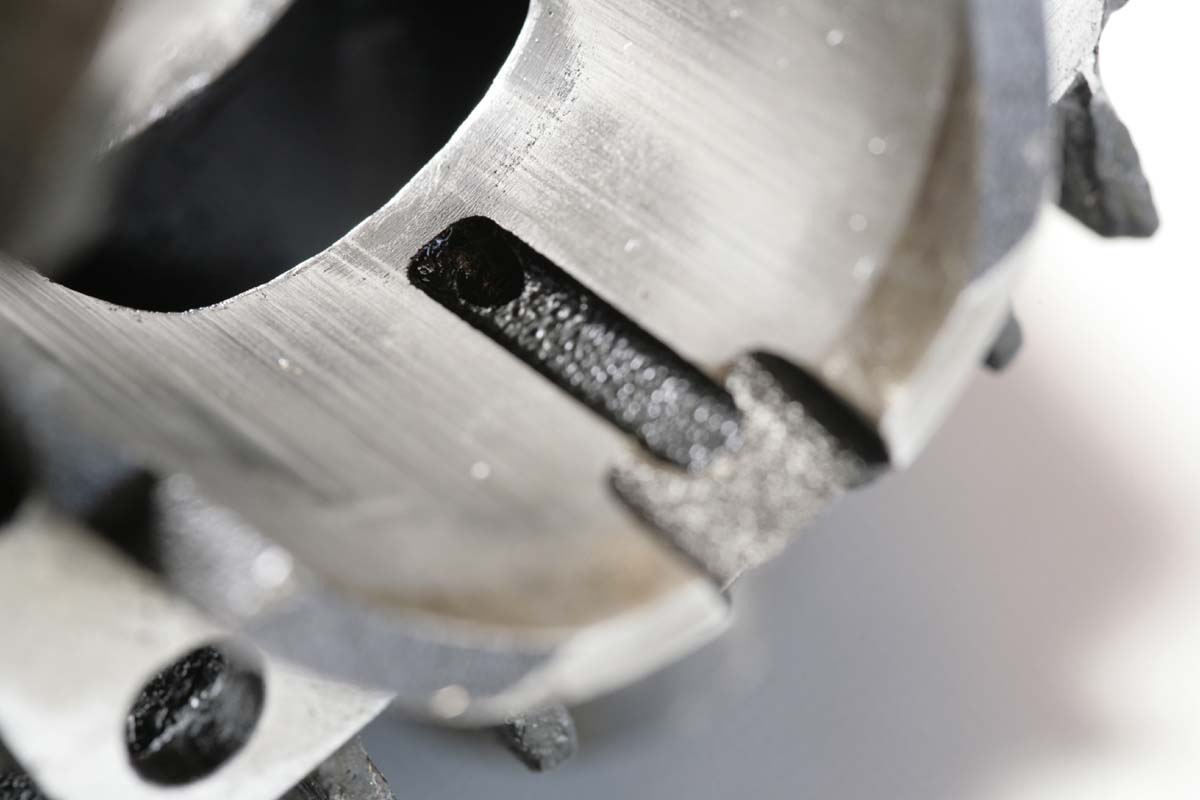

The Wolff twin engine has separate oil supply holes for separate lubrication on the inner wall of the cylinder, i.e., the piston sliding surface. This type of oil supply passage is rare even in Suzuki 2-strokes. The machine owner modified this engine oil supply system and changed it to a common oil passage (the type that mixes with fuel at the intake port).
Newly fabricated oil passage with copper pipe and press-fit fixation
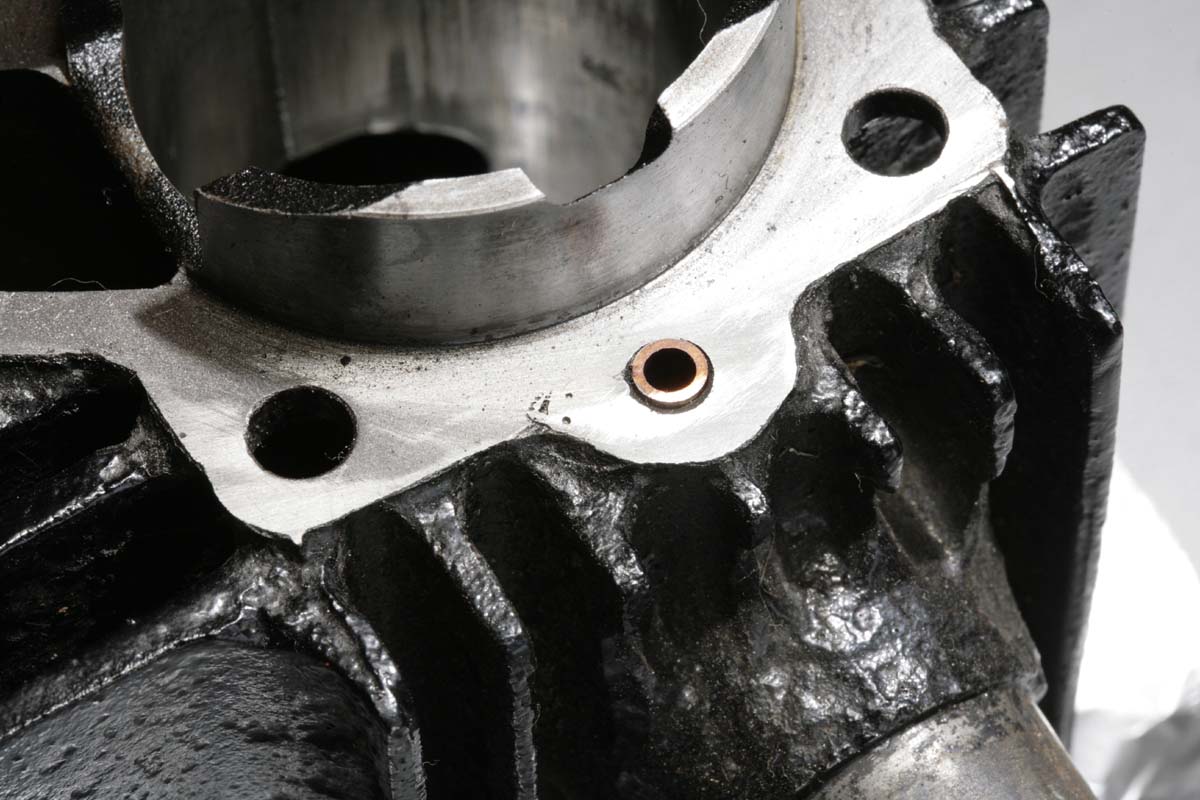

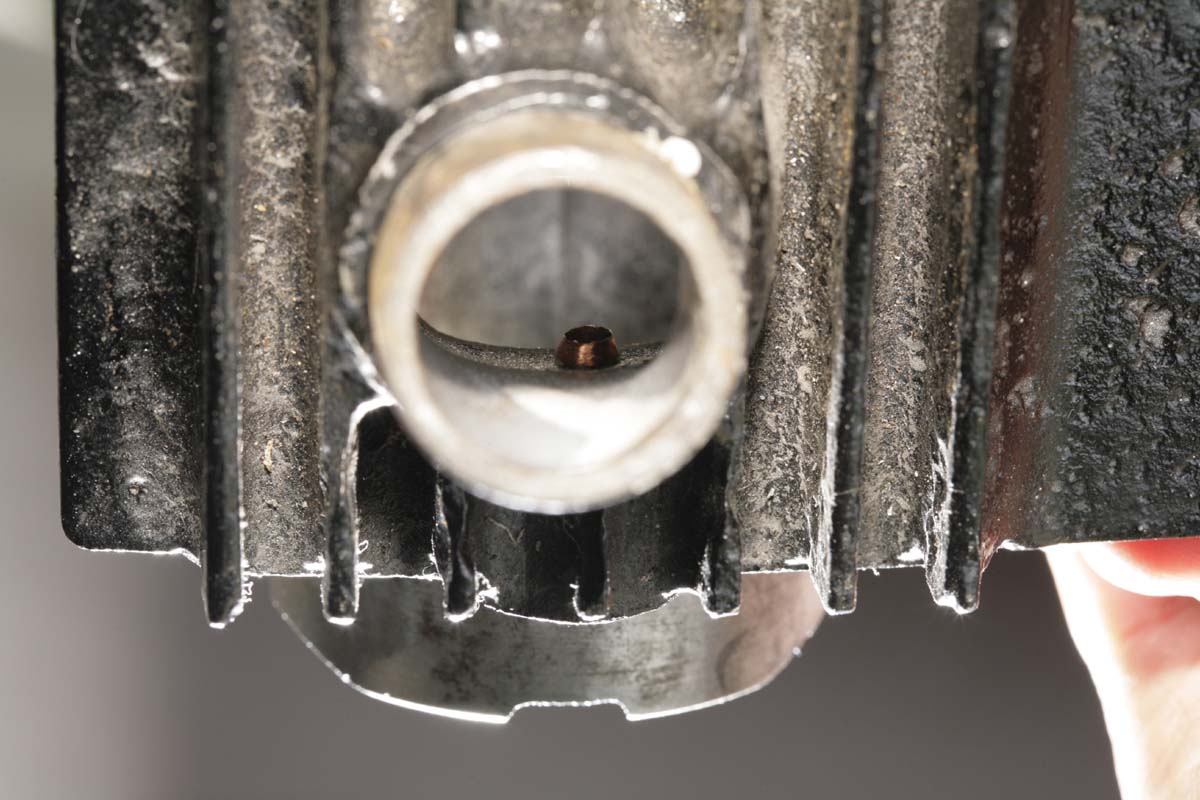

The Wolf 125 has an oil passage from the cylinder base gasket surface to the cylinder inner wall, but the oil injection nozzle was moved by press-fitting a copper pipe from the cylinder base gasket surface and extending the copper pipe to the carb intake section. The machine owner thought that having the nozzle at this intake port would make it easier for the engine oil to mix with the intake air mixture and improve the total lubrication performance.
Modifications to the carburetor to facilitate carburetor setting
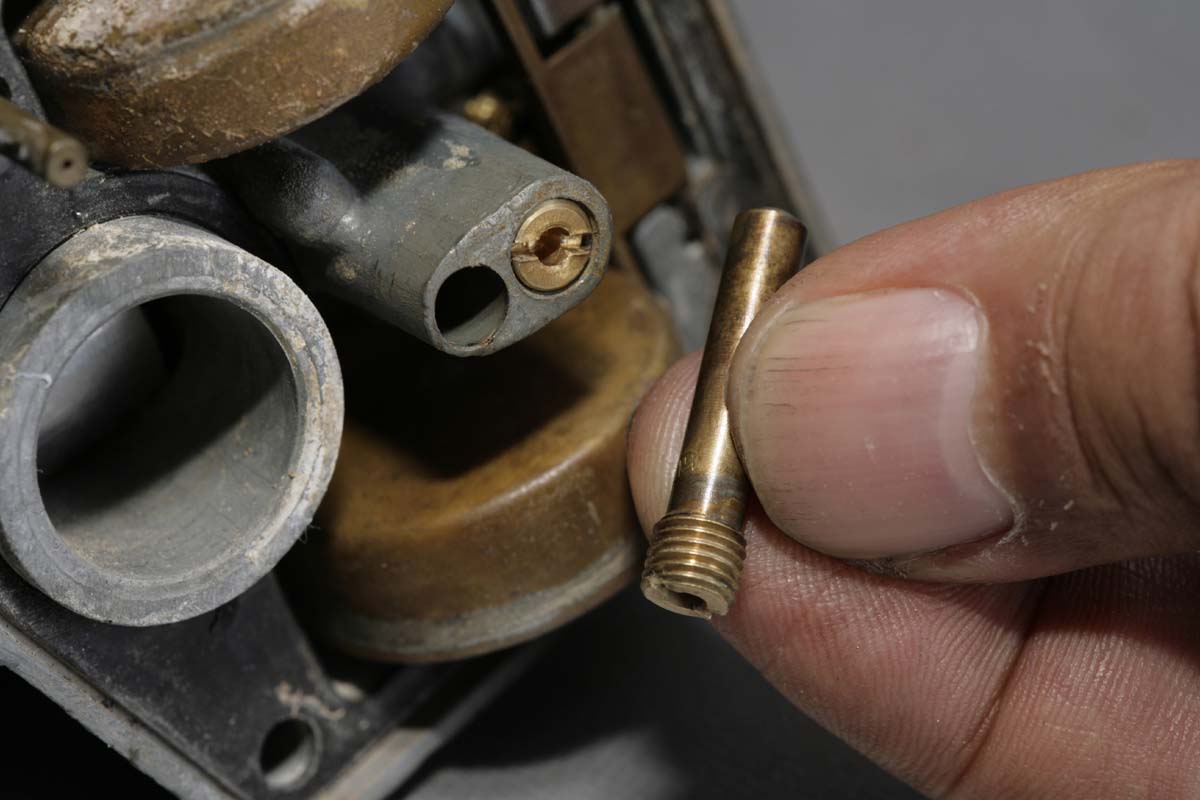

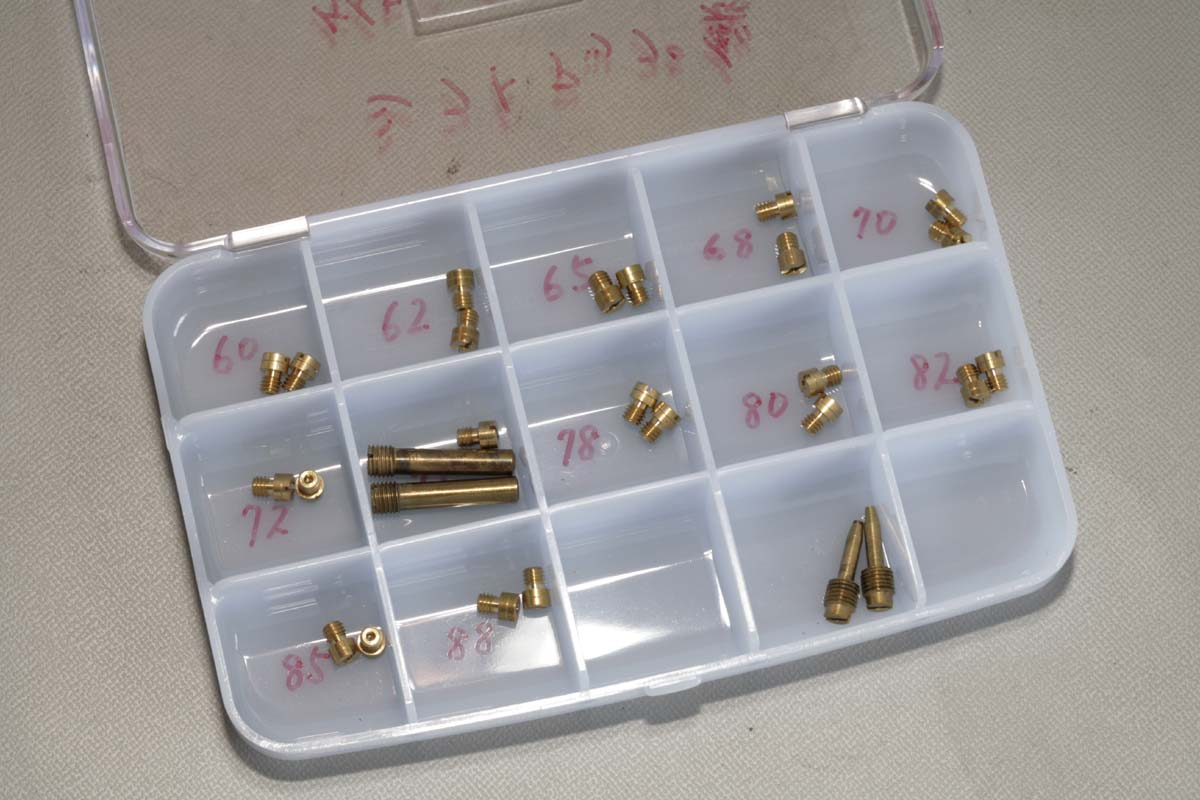

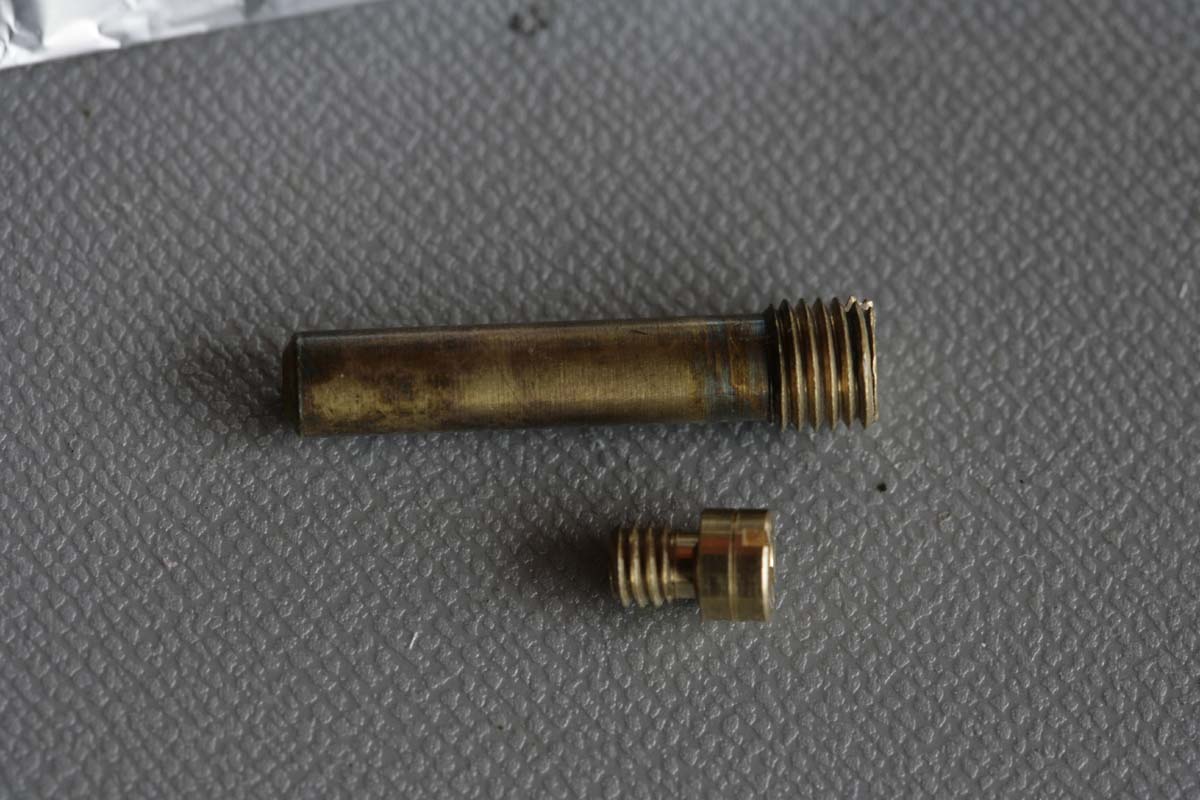

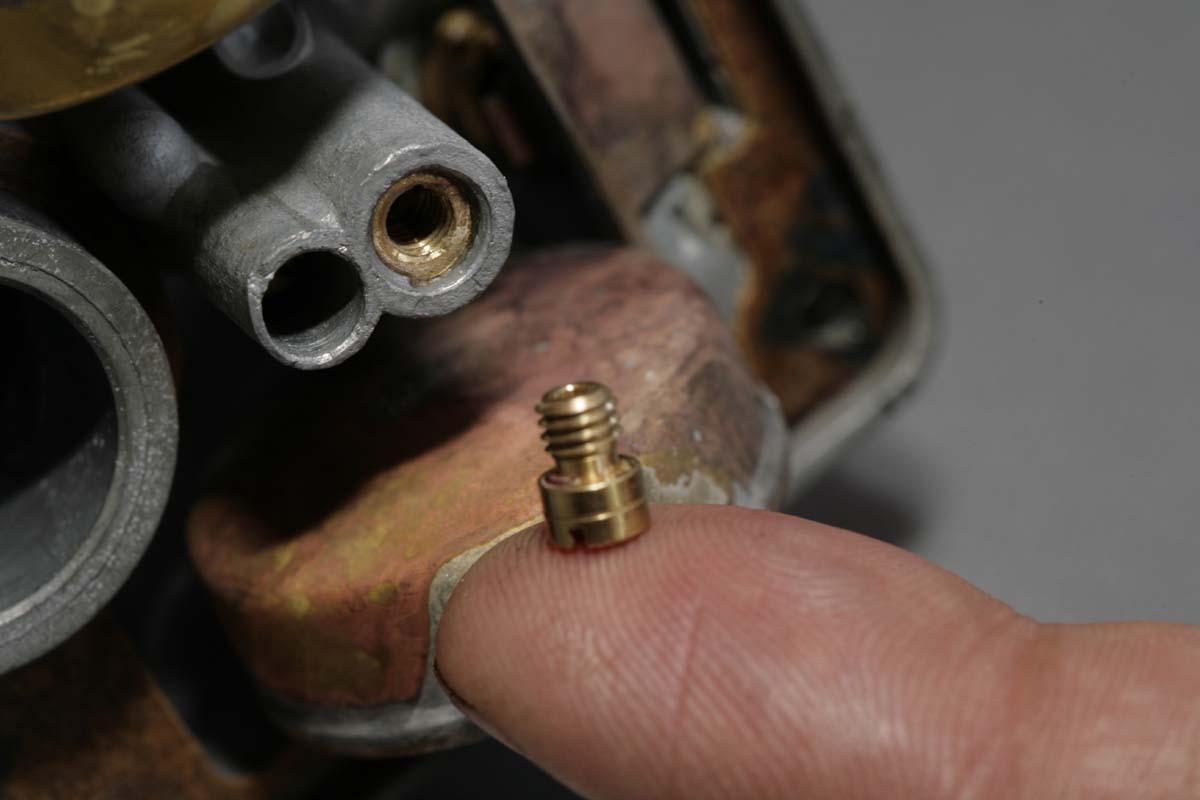

As can be understood from the peculiar design of the carburetor body, the shape of the internal parts was also a special specification of Wolf’s downdraft carburetor. Since the original Wolff main jet was a long type that was not compatible with other models, a thread was machined into the head of the original main jet so that a main jet commonly known as a small round jet for Keihin could be installed. This allows for setting adjustment when installing a self-made chamber.
POINT
Point 2 – Signs of improvement can be obtained by comparing the experience and know-how gained from motorcycle maintenance with current problems.
Point 3 – Improvement and modification for easier handling are important factors for Sunday mechanics.
The Wolf 90/125 series, which could be called Suzuki’s version of a two-stroke little twin in the vein of European design, was equipped with a forward-leaning two-cylinder engine, piston valve cylinders, and downdraft carbs, and its overwhelming individuality made many motorcycle fans roar. However, this model also had the infamous stigma of having an engine that was prone to seizure. The owner of the machine purchased several junk engines at an Internet auction. When he disassembled the engine he received, he found that the pistons were almost completely destroyed by seizure. On the other hand, the crank bearings, which have a dedicated oil line due to the use of a separate oil supply system called CCI, were almost undamaged in many cases.
Why are the pistons prone to seizing? The machine owner thought that the oil supply passage might not be good. Even a machine that is often derided as having a lot of trouble and being difficult to handle can be made to run smoothly by changing the way it is thought of. This Wolf 125 seems to have proved exactly that.
Engine oil discharged from the oil pump generally enters the engine through a nozzle located at the intake of the carburetor. With the nozzle in this position, the oil can easily flow out smoothly due to the negative intake pressure and mix with atomized fuel. However, the oil nozzle on the Suzuki Wolf 125 was located on the inside wall of the cylinder and was designed to flow down into the primary compression chamber when the piston rises. By improving this lubrication route to the general = supply route as mentioned above, the engine, which was prone to seizure, was able to run stably without any problems even after repeated runs at full throttle. The other oil line, which lubricates the crank bearings, remained the same, so there was no need to change the specifications.
The downdraft carburetor of the Wolf 90/125 is said to have a peculiarly shaped main jet, a type not used in other models, due to its construction. Regardless of whether it is a commercial or homemade product, a carburetor setting is often essential when installing an expansion chamber. In order to be able to replace the main jet with ease, we modified the carburetor to use the one for Keihin PB. The long part in the upper comparison photo is the stock Suzuki main jet for the Wolf, and the smaller main jet in the lower photo is for the Keihin, which is compatible with the stock carburetor for the Ape 50. The machine owner modified the OEM main jet to fit the Keihin small main jet by lathing and tapping to make new threads.